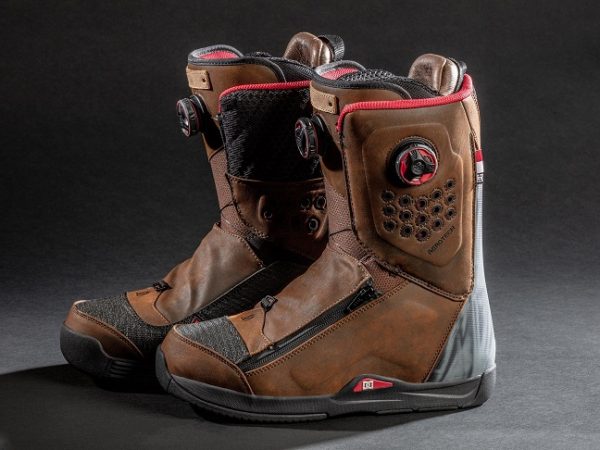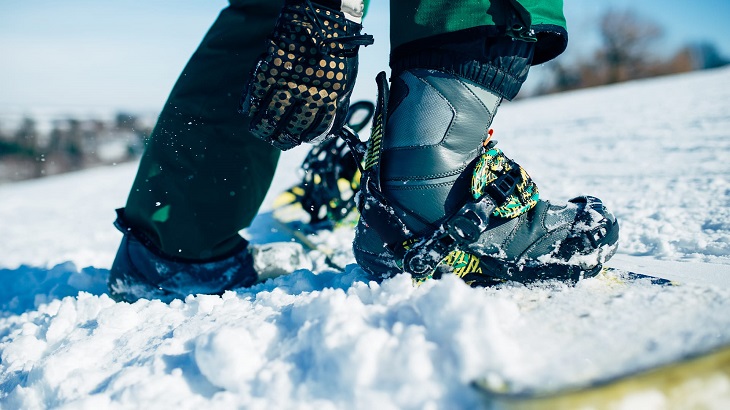20
Sep

Snowboarding is one of those sports that everyone seems to love, don’t you think? People are having loads of fun with it and you just want to see if it lives up to the hype. Judging by the way everyone talks about it, it’s highly unlikely you’ll end up disappointed. There’s something so incredibly freeing about sliding down the snow-covered slopes and feeling the cold air hit your face. If you’re an avid fan of snow in general, that’s literally a dream.
It’s no secret that if you want to snowboard, you need to pack all the essential ski clothing items. Perhaps the most important piece of this puzzle is getting a pair of snowboard boots. There are a lot of things at play here – your boots need to be functional yet stylish, lightweight yet warm. How do you know that you have the right one? That’s probably the question that’s ringing in your head at the moment. But don’t worry, you don’t have to take on this challenge on your own because we’ve prepared our own guide to help you out. Here you’ll find all the necessary information to get you started on the right track.

Source: kidsshop.top
This is the million-dollar question, isn’t it? How are you supposed to know you’ve picked the right ones for you? Well, take into consideration the following factors and let your answers guide you through the process.
Believe it or not, the type of lacing system on your boots plays a key role in your overall performance. There are three main ways you can lace your snowboard boots – boa, traditional and speed style. It’s important to note that each system is functional and secure, providing maximum support for your ankles and feet all while not limiting your flexibility.
Starting off with the boa snowboard boots – these are the ones that allow the greatest degree of personalisation in order to achieve a custom and snug fit. And we all know that’s what’s most important when you’re sliding down the slippery slopes. When it comes to the lacing of super comfy snowboard boots boa system offers the most support.
The two stainless steel cables make room for convenient adjustments specifically tailored to your needs. This can easily be done with gloves on or even with one hand, which is what makes this lacing system stand out from the rest. This means that you can modify and adjust the straps whenever you want, even when making pauses while snowboarding. Once the straps are in their proper place, the boa system offers uniform snugness and support all throughout.
The bottom line is when choosing the lacing on your snowboard boots boa system makes things a lot less of a hassle due to its ease of use. Sure, they’re a little more expensive than other lacing options but it’s worth your while in the long run since they’re bound to last you a lifetime. Another great thing about the boa lacing system is that it’s a great option for beginners who are still trying to figure out what works best for them because of its practicality and functionality.
The traditional laces are tried and tested, offering great customisation options. They’re fairly inexpensive and easy to use but they do show a tendency to loosen up with extended use during the day.
On the other hand, speed or quick-pull laces are exactly what the name suggests – laces that are quick and easy to pull and tie together. They can be tucked away neatly on the sides for a fast and convenient lace up system. Unfortunately, some people consider them somewhat too difficult to pull up as snugly as they’d like and therefore think they don’t fit properly. Truth be told, you need to exert yourself quite a bit to get the desired feel on your feet.
Getting the right size is crucial because your boots shouldn’t be too tight or too loose. Remember, your foot shouldn’t feel sloppy inside the boot but its movements shouldn’t be restricted either. When trying on different pairs of boots, make sure you wear the socks you intend to have on while you’re snowboarding so that you get a general idea of what they feel like on your feet. If possible, shop for boots later in the day since this is when your feet are a little swollen from your daily activities and as a result, you’ll be able to find the appropriate size much more easily.
You need to figure out what style of snowboarding you’ll be doing since different types of boots are designed specifically to cater to different needs and purposes. Will you be doing all-mountain or freestyle snowboarding? Powder or splitboard? Once you have the answer to that question, choosing the appropriate type of boot comes easily.
This factor refers to how flexible the boot sole is, ranging from soft to stiff. This is mainly a subjective choice since there’s no right or wrong answer here. Some people prefer a sole that’s on the softer side whereas others want more rigid support. It all depends on your preferences, what works for you may not work for others and vice versa.

Source: snowlink.com
Generally speaking, your boot length should be about the same as your board width to provide maximum balance and ease of movement. There are always exceptions though since it’s not uncommon for beginners to start off with a much wider board until they get used to things but this doesn’t mean that your boots should be larger as well. First and foremost you need to make sure that the boots are the right fit for your foot and only then can you compare them to the size of your board.